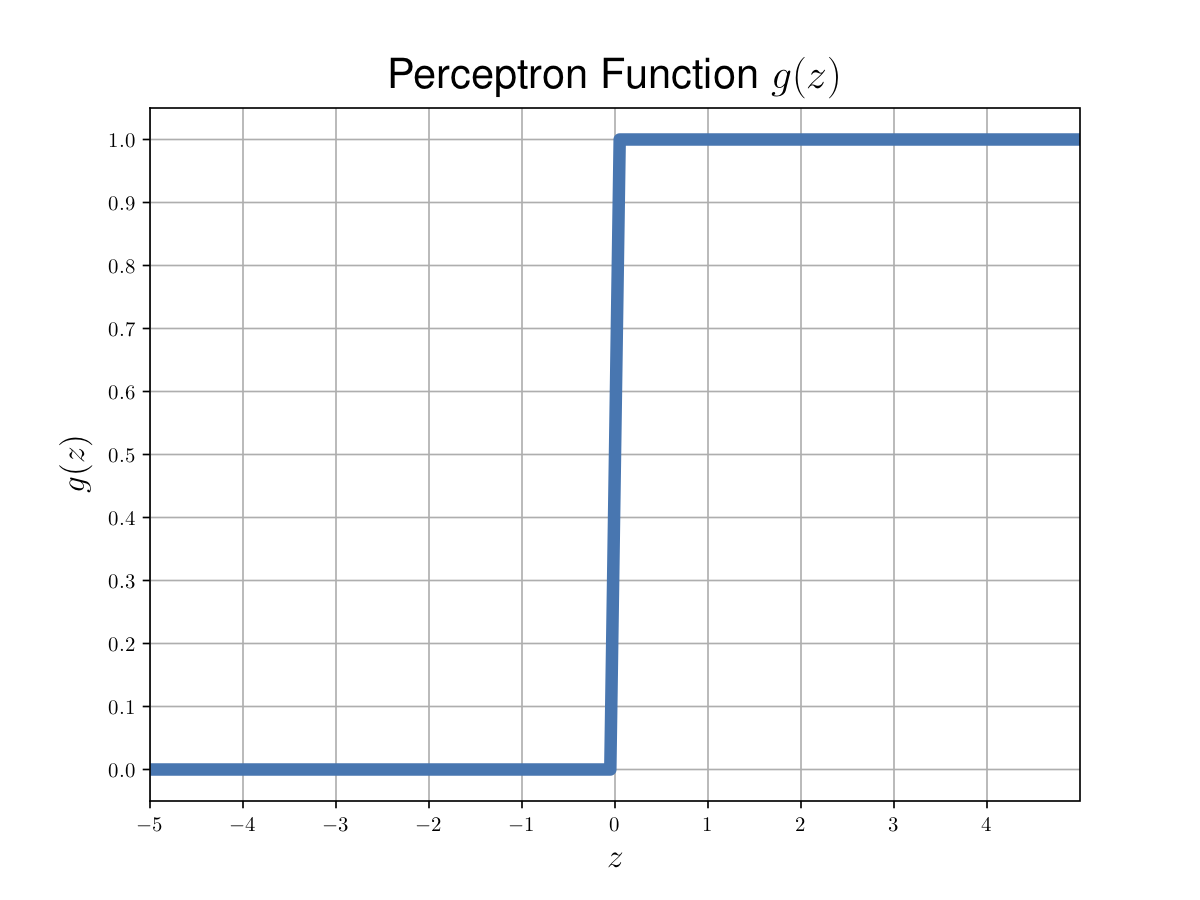[CS229] Lecture 3 Notes - LWR/Prob Interp/Logistic/Perceptron
-
date_range Feb. 12, 2019 - Tuesday infosortNoteslabelcs229machine learning
- Locally Weighted Regression
- Probablistic Interpretation of LR
- Classification (Logistic Regression)
- Disgression -> Perceptron
- 1. Locally Weighted Regression
- 2. Probablistic Interpretation of LR
- 3. Classification and Logistic Regression
- 4. Digression - Perceptron
- Reference
1. Locally Weighted Regression
1.1. The origin:
-
The choice of features is important to ensuring good performance of a learning algorithm.
-
The Locally weighted linear regression (LWR) algorithm, which assuming there is sufficient training data, makes the choice of features less critical.
1.2. Detail:
The locally weighted linear regression alogorithm does the following:
- Fit \( \theta \) to minimize \(\sum_i w^{(i)} (y^{(i)} - \theta^T x^{(i)} )^2\).
- Output \(\theta^T x\).
where \(w^{(i)} = \exp\left(-\frac{(x^{(i)} - x)^2}{2\tau^2}\right)\), \(\tau\) is called “bandwidth”.
Note that:
- the wights depend on the particular point \(x\) at which we’re trying to evaluate \(x\).
- if \(\vert x^{(i)} - x \vert\) is small, the \(w^{(i)}\) is close to 1;
- if \(\vert x^{(i)} - x \vert\) is large, the \(w^{(i)}\) is close to 0;
1.3. Parametric v.s. Non-Parametric Learning Algorighms:
“Parametric” learning algorithm:
- Fix numbers of parameters to fit the model;
“Non-Parametric” learning algorithm:
- Number of parameter grows with \(m\) (\(m\) is the training size).
- To make predictions using LWR, we need to keep the entire training set around. (LWR is the first example in the class as a non-parametric algorithm).
2. Probablistic Interpretation of LR
2.1. Assumptions:
We assume that:
where
- \(\varepsilon^{(i)}\) is the error and \(\varepsilon^{(i)} \sim \mathcal{N}(0, \sigma^2)\), which means \(P(\varepsilon^{(i)}) = \frac{1}{\sqrt{2\pi}\sigma}\exp\left(-\frac{(y^{(i)} - \theta^T x^{(i)})^2}{2\sigma^2}\right)\).
- \(\varepsilon^{(i)}\) is I.I.D. (independently identically distributed).
2.2. Maximum Likelihood
2.2.1. There are two different basic ideas in probability:
- Frequency point of view -> (Applied here!)
- Bayesian point of view.
2.2.2. The principle of maximum likelihood:
- To choose \(\theta\) to maximum \(L(\theta)\), \(\theta\) is NOT a random value, but a true value out there!
2.3. Find the best \(\theta\) to reach the “Maximum Likelihood”:
Then, the “Likelihood” of the \(y\) is:
Then, for mathematical convenience, let
Therefore, to maximize \(l(\theta)\) is to minimize \(\sum_{i=1}^m \frac{\left(y^{(i)} - \theta^T x^{(i)}\right)^2}{2\sigma^2}\), which is the same as minimizing \(J(\theta) = \sum_{i=1}^m \frac{\left(y^{(i)} - \theta^T x^{(i)}\right)^2}{2}\) (this is the rule for Least Square).
3. Classification and Logistic Regression
Note: Generally, it’s bad idea to use LR for classification problems. Why? It doesn’t make sence for \(h_\theta(x)\) to take values larger than 1 or smaller than 0 when we know that \(y\in{0,1}\).
3.1. Logistic regression for classification problems
As in a classification problem:
To fix the problems when using Linear Regression, we choose another form of function for our hypothesis \(h_\theta(x)\).
where
\(g(z) = \frac{1}{1 + e^{-z}}\) is called “sigmoid” function or “logistic” function.
 |
|---|
| Figure 2. Sigmoid function. |
Then, we have
Then the likelihood is
For mathematical convenience, let
To maximize the likelihood, here we use gradient ascent by \(\theta := \theta + \alpha \nabla_\theta l(\theta)\). The derivative is (derivation omitted, can be found on Page 18 in the notes):
(added on 02/19/2019)
 |
|---|
| Note 1. Review of “logistic regression” from scratch. |
4. Digression - Perceptron
Almost the same procedure as the logistic regression. The only difference is the \(g(z)\) used in the process.
The \(g(z)\) used in perceptron learning algorithm is:
 |
|---|
| Figure 2. Perceptron function. |
Then, \(h_\theta(x) = g(\theta^T x)\), and the update rule for perceptron learning algorithm is almost the same:
(added on 02/19/2019)
 |
|---|
| Note 2. Review of the “perceptron learning algorithm”. |
Reference
KF
